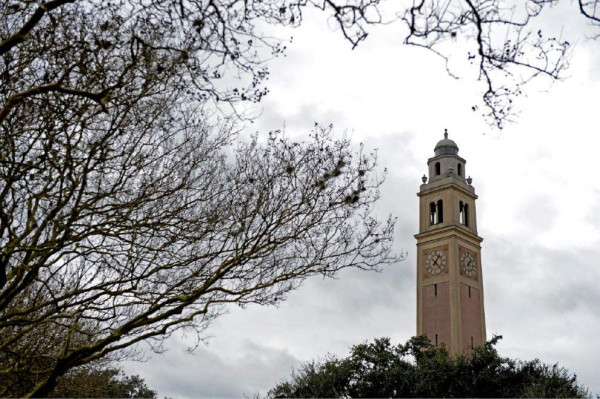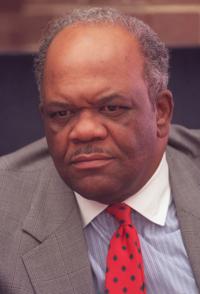LOUISIANA: LSU Changed Street Named After Well-Known Confederate Admiral
LSU on Monday changed the name of the street in front of the African American Cultural Center from one remembering a Confederate admiral to one honoring all military veterans.
But the university said the name change was not part of any overall plan to rid reminders of the Confederacy from the Baton Rouge campus. Rather, its part of a modernization effort to add physical addresses to campus buildings, called the Roadway Master Plan, LSU said in a prepared statement. Raphael Semmes was the only Confederate out of the 28 roads that were renamed by LSU.
LSU has several buildings and streets named for people who fought for the South during the Civil War. Residential halls are named after Confederate Generals P.G.T. Beauregard and Kirby Smith. An academic building is named for Col. Samuel Henry Lockett, a Confederate engineer. An administrative building bears the name of Col. David Boyd.
The school’s “Fighting Tigers” nickname comes from Confederate infantry units known for ferocious combat on the battlefield and rowdy behavior in the camps. Charles E. Coates Jr., a dean at LSU and the school’s first football coach, referenced the rebel units when coming up with the university’s nickname in the 1890s.
“There’s always consideration about changing inappropriate names,” said Dereck J. Rovaris Sr., LSU’s vice provost for Diversity & Chief Diversity Officer. “But there have been no formal discussions by the university.”
Rovaris said some students have been doing research on the names applied to buildings and streets since the present Baton Rouge campus was built in the 1920s and 1930s. Some of their origins are unknown and how the names got attached to LSU streets and buildings are equally mysterious.
For instance, Rovaris said that after the Civil War, Semmes talked to a friend of a friend to secure a job at LSU. The admiral taught at the school for three years, then moved. “So how did this guy rate a street getting named after him?” Rovaris asked.
LSU is trying to modernize its street system and is moving towards “a GPS-based address numbering system for all buildings, including coordinates to main entrances and service entrances…,” according to the statement announcing the change. The LSU Board of Supervisors approved the name changes in October when signing off on the master plan.
Many of the street names on campus had little to no significant connection to LSU, said university spokesman Ernie Ballard III in a prepared statement.
Several streets are being renamed. The university is working with the City of Baton Rouge to change the street signs.
Gov. Claiborne Drive, between West Roosevelt and Aster, is being renamed Spruce Lane.
Dorothy Dix Drive, named after a columnist for the Picayune, a New Orleans newspaper in the 1890s, is losing its name and becoming a parking lot.
A street named for Étienne de Boré will become Field House Drive. Boré first granulated sugar on his plantation in what is now Audubon Park in New Orleans and became the first mayor of New Orleans under U.S. rule.
Isaac Cline Drive, which passes by the LSU System Office, will be renamed Cub Circle for nearby University High’s mascot. Cline was the Galveston meteorologist who wrote that hurricanes would never harm what then was the largest city in Texas. That was shortly before the Hurricane of 1900 killed about 12,000 people in Galveston. He later moved to New Orleans during the Great Mississippi River Flood of 1927.
Raphael Semmes Road branched off Tower Drive along the Parade Grounds, passing the LSU Theater, the Student Union and the African American Cultural Center.
Semmes was a Marylander who settled in Alabama on the other side of Perdido Bay from where the Flora-Bama Lounge is now located. He sailed the CSS Alabama, which raided Union commerce vessels around the world during the Civil War.
The Board of Supervisors in May renamed the African American Cultural Center after the late Clarence L. Barney Jr., who had been president of the Urban League and the first person of color to chair the LSU board.
LSU is naming the African American Cultural Center after the university’s first black board chairman.
The Center’s address was 3 Raphael Semmes Road, which Barney’s son, Shawn, noted with irony at the time of LSU Supervisors’ vote. He said the street name “reflects where they were then. This (the cultural center) reflects where they are now.”
A.P. Tureaud Jr. in 1953 became the first black undergraduate student to enroll at LSU. He was admitted under court order. Rovaris said LSU now has more black students than about 70 historically black colleges and universities across the country.
Here’s a full list of changes coming:
|
Original Name |
Proposed Name |
| AgCenter Drive | AgCenter Lane |
| Unnamed | Athletic Service Lane |
| Unnamed | Campus Lake Lane |
| Isaac Cline Drive | Cubs Circle |
| Ceba Lane | Engineering Lane |
| Unnamed | Evangeline Circle |
| Etienne de Bore | Field House Drive |
| West/East Fraternity Lane | Fraternity Lane |
| Infirmary Road | Infirmary Lane |
| Unnamed | LADDL Lane |
| Unnamed | Landscape Services Lane |
| Unnamed | Law Circle |
| Unnamed | Live Oaks Lane |
| Unnamed | Parade Ground Circle |
| Unnamed | Parker Coliseum Lane |
| Dorothy Dix Drive | Parking Lot |
| Mike Donahue Drive | Parking Lot |
| Minnie Fisk Drive | Parking Lot |
| Unnamed | Soccer Lane |
| Nicholson Drive Extension | South Quad Drive |
| Governor Claiborne Drive | Spruce Lane |
| Unnamed | Tiger Park Lane |
| Unnamed | Touchdown Village Lane |
| Unnamed | Vet School Lane |
| Unnamed | Vet Lane |
| Raphael Semmes Road | Veterans Drive |
| Unnamed | Warehouse Lane |
| Unnamed (South of South Stadium Drive) | West Stadium Drive |
–theadvocate.com
###




